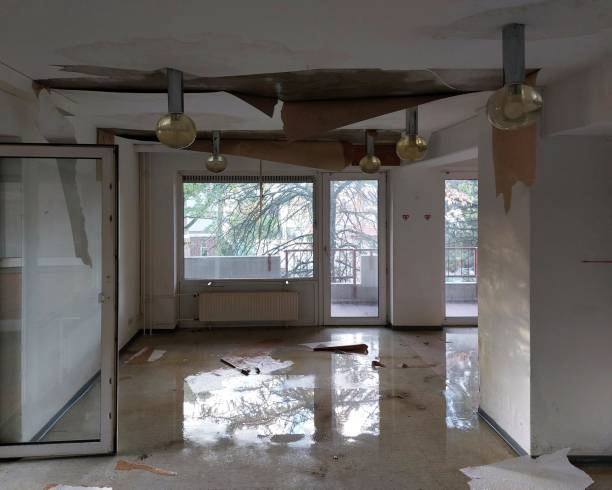Among all the problems associated with water damage, mold formation is the worst. Mold prefers to grow in areas with moisture. Mold prevention after water damage in Vancouver is crucial to ensure that your home is habitable and does not harbor mold spores. In this blog, you will learn how to prevent mold proliferation and ensure that your property is safe from it. No one wants to face a leaky roof, a burst pipe, or a flood; here is how to minimize the risk of mold growth and its potential impact on your health and home.
Act Quickly to Dry Affected Areas
The first step in preventing mold after flooding in Vancouver is to act quickly. Mold is known to develop within 24 to 48 hours in damp circumstances. Immediate action should be taken to dry the affected area when water damages it. Open some windows, turn on the fans, or consider renting a dehumidifier to reduce humidity in the area. The sooner the water is removed from your home, the lesser the possibility of mold forming inside your residence. If the damage is severe, there is broad expertise that can be sought from the professional companies that offer water damage mold removal in Vancouver.
Identify the Source of Moisture
Mold requires moisture to develop, so finding the water source and getting rid of it is essential. The most common causes include a leaking pipe and a broken window or roof, among other causes identifying its source. Unfortunately, it tends to reoccur after cleaning because the problem that caused mold growth remains unresolved. If you don;t know where the mold could have originated, it can be beneficial to seek advice from experts offering mold remediation services in Vancouver. They allow the identification of concealed moisture areas and prevent your house from being exposed to moisture.
Remove Wet Materials
Some substances are likely to develop mold when wet for a long duration. These include wet carpets, wooden structural supports, walls and/or ceilings made of drywall, and any form of insulation. If any of these materials are thoroughly soaked, then it is advisable to take them out. However, mold growth can also be prevented if the water intrusion in Vancouver is not very severe and these materials can be dried quickly. If they have been wet for not less than 48 hours, then they should be replaced to prevent accumulation of molds.
Use Mold Inhibitors and Clean Surfaces
Cleaning up the affected area is also essential when the mold is removed. For areas that came into contact with water, you should clean the affected area using soap and water or use a disinfectant to clean the area. For additional home protection, apply mold inhibitors on materials such as wood or drywall. These products may be used to inhibit the formation of molds because they offer protection from moisture. Maintain most vulnerable places, for instance, bathrooms or basements, or any regions commonly exposed to dampness, to avoid re-emergence of mold.
Keep Humidity Levels Low
Controlling the humidity in your home is a key factor in stopping mold growth. Mold requires moisture to grow, keeping your home as dry as possible is essential. Employ the services of dehumidifiers, particularly in areas vulnerable to moisture, by enhancing the right relative humidity level of 30% to 50%. This will help reduce the probability of mold establishing itself and proliferating within the plants. Also, it will be advisable to use air conditioning, especially during summer, to reduce humidity levels in the house.
Consider Professional Mold Remediation Services
If mold has already manifested or in case of large-scale water damage, it is better to use the services of a specialist. Expert mold removal in Vancouver is the process that can help completely eliminate molds and bring the house back to its original condition. These professionals possess all the necessary equipment and knowledge for the correct mold removal, preventing its further growth and making your home safe again. If the problem gets too big, do not hesitate to call a professional for help.
Conclusion
In conclusion, effectively preventing mold after water damage requires immediate intervention, regular maintenance, and the use of mold-inhibiting treatments. By promptly drying flooded rooms, thoroughly removing water-damaged materials, and carefully controlling humidity, homeowners can significantly reduce the risk of mold growth. However, if mold has already begun to develop, it’s essential to contact professional mold remediation or water damage mold removal services in Vancouver. Taking quick action to stop water intrusion and managing indoor humidity levels will play a critical role in preventing mold formation after flooding in your Vancouver home.
Musty odors, discolored spots on walls or ceilings, peeling paint, and worsening allergy symptoms are common signs of mold presence.
Dry all affected areas quickly, use dehumidifiers, improve ventilation, and get a professional inspection if needed.

